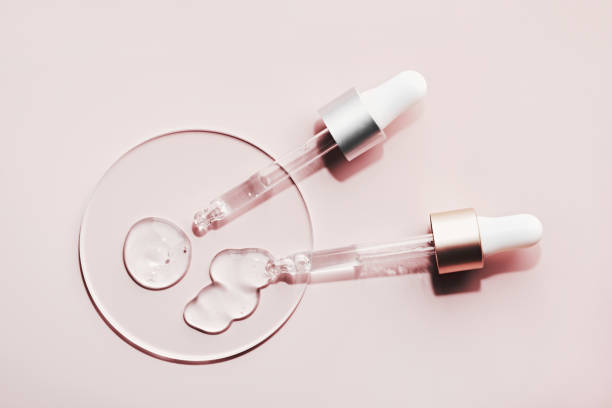Imagine walking into the grocery store and picking up two virtually identical apples. One in your left hand is red and shiny with no bruises. The other on your right has a similar appearance, but it’s a bit smaller, not as polished, and costs twice as much. Amazingly, we would choose the expensive item despite the fact that the label on it says a simple word. This word is Organic. When we buy things online, the same principle applies. We often add the word “organic” to our searches, ignoring price and availability to purchase the “organic lifestyle.” What is the definition of ‘Organic’ in relation to the food and products that we consume?
Organic products are those that have been grown without pesticides or synthetic fertilizers. They also do not contain sewage sludge. The animals that produce dairy, poultry, eggs, and meat do not receive growth hormones or antibiotics.
Organic food is produced by farmers who use renewable resources, conserve soil and water, and improve environmental quality for future generations. Animals that have organic meat, poultry, and eggs are not given growth hormones or antibiotics. Food that is organically grown does not use conventional pesticides, synthetic fertilizers, wage sludge, bioengineering, or ionizing rays. A USDA-certified inspector inspects a farm before a product is labeled as “organic” to ensure that the farmer follows all rules required to meet USDA organic standards. Certified companies must also handle or process organic foods before they reach your local supermarkets or restaurants.
How can I tell if something is organic?
The USDA has defined three categories for labeling organic products.
- Made from 100% organic ingredients
- Organic: Made from at least 95% organic components
- Made From Organic Ingredients: Made from a minimum of 70% organic ingredients, with strict restrictions for the remaining 30%. This includes no GMOs.
The side panel of a package may include organically produced ingredients, but the front may not.
ORGANIC TEXTILES ARE THE BEST CHOICE WHEN IT COMES…
There are many organic certifications available for textiles in different regions of the world. The Global Organic Textile Standard ( Global Organic Textile Standard) is one of the most widely recognized processing standards for materials made with organic fibers. Oeko-Tex Standard is 100, the standard used in Europe. It defines high-level criteria for the environment along the organic textile supply chain.
Only textiles that contain at least 70% organic fibers are eligible for GOTS certification. All chemicals, such as dyestuffs or auxiliaries, must meet environmental and toxicological criteria. Accessories are limited according to ecological factors. All wet-processing units must have a functional waste water treatment system and must meet minimum social standards. This section summarizes the key criteria for GOTS and its quality assurance system, as well as the principles of review and revision procedures.
What are the benefits of organic textiles?
No harmful chemical application – As mentioned, organic fabric does not use pesticides. Organic materials can minimize allergic reactions for people who are sensitive or allergic to chemicals. One of the main reasons that some groups are against pesticides and other chemicals that are used on crops is that they can kill birds and animals. This can also trigger the growth and resistance of bacteria to chemicals. It disrupts the natural balance.
Additionally, the chemicals that are used on the soil may damage its overall chemistry. As the years pass, the earth will be less able to produce the same amount of crops as it once did. Farmers will have to invest more money and time to achieve their desired yield. Organic fabrics do not contain chemicals that can alter the soil’s balance. It reduces carbon footprint and energy consumption, which are harmful to the environment.
BiodegradableAccording to research, the US alone generates around 1.35 billion pounds of trash every day. We must do our part. These fabrics will degrade naturally with biodegradable material.
Comfortable and durable -Organic cotton is a fabric that offers both comfort and durability. These fabrics are also known for being comfortable and smooth. It is, therefore, perfect for everyday fashion.
Antibacterial: Another good reason to buy organic cloth is that it has antibacterial properties. This characteristic is found in both natural and organic fibers. For example, hemp and bamboo are known to have antibacterial properties, which can help control unwanted odors, especially after a long day.
Promoting natural or organic fibers, which don’t disturb nature in any way, is a surefire way to help the environment. Most companies only use organic labels without checking the source. It is not only a bad idea, but you also risk legal issues. You should only source raw materials from reputable sources who can provide lab results or certificates to prove you are selling organic material.
How can a farmer convert land to organic status?
The conversion of land in the United States to organic status takes three years. The conversion process takes two years to increase the fertility of the soil. The first-year crop cannot be labeled organic. In the second year, the produce can be marked as “In conversion.” The third year is the only time that you can declare your produce as 100% organic. Organic farming is based on soil and fertility.
Farmers and handlers must document their processes and be inspected annually to maintain organic certification. The organic on-site inspections cover every aspect of the operation, including but not limited to seed sources, soil condition, crop health and weed and pest control, water systems, and inputs. They also include contamination and commingling risk and prevention, as well as record keeping. The USDA organic promise includes tracing organic products all the way from seed to market.
Why is organic food more expensive?
Organic food does not always cost more. Coffee, cereals, bread, and even hamburgers may be the same price or less expensive than their conventional counterparts. As the demand for organics grows, so will the price. Consider these facts when the price is higher:
- Organic farmers don’t receive federal subsidies like conventional farmers do. The price of organic foods reflects this true cost.
- The cost of environmental cleanups, which we pay through tax dollars, is not reflected in the price of conventional foods.
- Organic farming requires more management and labor.
- Organic farms tend to be smaller than conventional farms, so they don’t benefit from economies of scale.





